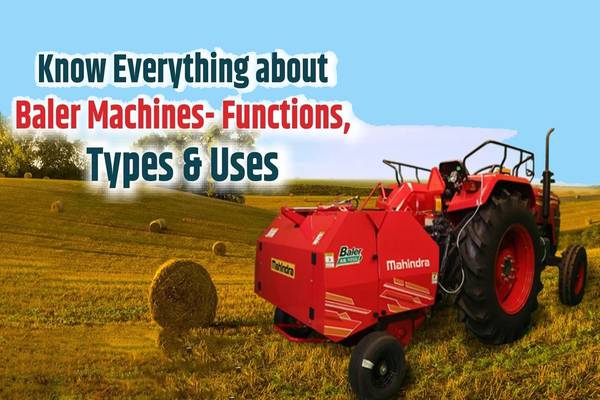Understanding Balers In Agriculture
Drafted by: vijaychourey26@gmail.com
Balers are an essential component of modern agriculture, enabling farmers to efficiently gather, process, and store crops. By compressing harvested materials into compact bales, balers facilitate easy handling, storage, and transportation. Over the years, baler technology has evolved significantly, making it a vital tool for farmers worldwide.
What Are Balers?
Defining Balers
Balers are agricultural machines designed to collect and compress crops such as hay, straw, cotton, and silage into dense bales. These bales are then bound together with twine or wire to maintain their shape during storage and transportation.
History of Balers in Agriculture
The origins of balers can be traced back to the late 1800s when mechanized farming began to gain traction. The first balers were large and cumbersome, drawn by horses or powered by steam engines. These early balers laid the foundation for the modern designs we use today.
The Different Types Of Balers
Round Balers
Round balers are popular for their simplicity and versatility. They form cylindrical bales, which are easy to handle and transport. Round balers are ideal for gathering hay and straw, making them a staple for livestock farmers.
Square Balers
Square balers produce rectangular bales, which stack neatly and are well-suited for storage and shipping. They are commonly used for baling straw and hay for commercial purposes.
Conventional Balers
Conventional balers create rectangular bales but require the operator to manually tie the bales with twine. These balers are suitable for smaller farming operations.
Mini Balers
Mini balers are compact and lightweight, designed for small-scale farmers and hobbyists. They produce smaller bales, making them easy to handle without heavy machinery.
How Do Balers Work?
Baling Process
The baler's pickup mechanism collects the crop from the field and feeds it into the baling chamber. The crop is then compressed, and the baler forms it into a bale.
Binding the Bales
Once the bale reaches the desired size, the baler's twine or wire tying system secures the bale's shape. After binding, the rear gate of the baler opens, releasing the finished bale onto the ground or a bale wagon.
Importance Of Balers In Agriculture
Efficient Crop Management
Balers simplify the process of gathering and baling crops, streamlining the harvest and storage workflow. This efficiency allows farmers to focus on other essential aspects of their farming operations.
Time and Labor Savings
Compared to manual harvesting and baling, balers significantly reduce the time and labor required. Farmers can bale large quantities of crops in a short time, optimizing their resources.
Storage and Transportation Benefits
Baled crops take up less space and are easier to transport. This allows for more efficient storage and transportation, reducing costs and making logistics more manageable.
Choosing The Right Baler For Your Farm
Assessing Your Farming Needs
Evaluate the size of your farm, the type of crops you grow, and the frequency of baling to determine the right baler for your needs.
Considering Bale Sizes
Different balers produce bales of varying sizes. Consider the space available for storage and the weight of the bales for transport.
Evaluating Balers' Features
Review the features and capabilities of different balers, such as automation, bale density, and ease of maintenance, to find the most suitable option.
Maintenance And Safety Tips
Regular Maintenance
To ensure the baler's optimal performance and longevity, perform regular maintenance, including cleaning, lubrication, and part replacement as needed.
Safe Operation Practices
Adhere to safety guidelines provided by the baler manufacturer to prevent accidents and injuries during operation.
Advancements In Baler Technology
Precision Agriculture and Balers
Advancements in precision agriculture technologies have influenced baler design. GPS systems and sensors help optimize baling efficiency and crop yield.
Automation and Robotics in Balers
Automation and robotics are being integrated into balers, reducing the need for manual intervention and improving overall performance.
Environmental Considerations
Sustainable Baling Practices
Farmers are increasingly adopting sustainable baling practices, such as using biodegradable twine and reducing plastic waste.
Recycling and Reusing Bales
Bales can be recycled or reused in various ways, such as feed for livestock or as a biomass energy source.
The Future Of Balers In Agriculture
Emerging Trends
The incorporation of artificial intelligence and data analytics in balers may lead to more precise baling and resource management.
Potential Innovations
Lightweight and autonomous balers might become prevalent, making baling more accessible to smaller farms.








